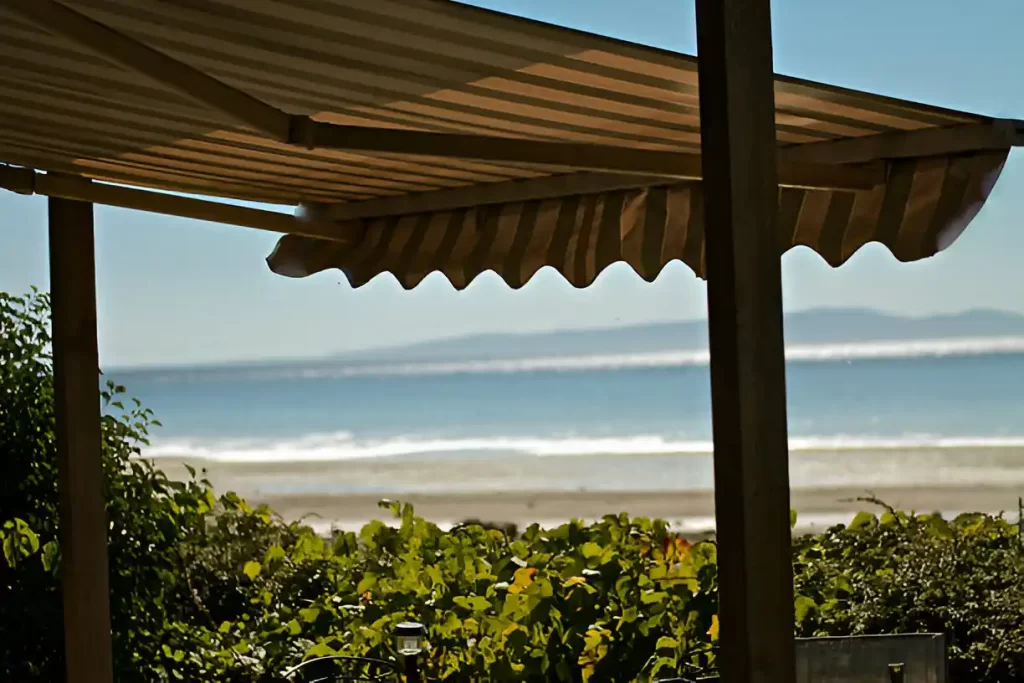So, are you confused about whether to get a fixed or retractable awning? You are not clear about their differences or the difference in their costs. Then you are at the right place, as I will explain the exact difference between these two and help you decide.
Difference in a nutshell :
The main difference between a non-retractable and a retractable cover is movement. A fixed cover, as the name suggests, cannot move or open and close. In contrast, a retractable cover can. You can open, partially open, or fully close retractable shade canopies, fabric roofs, louvred roofs, and other covers using either manual or motorized controls. This ability to move makes retractable covers much more flexible and provides several significant benefits.
Longer Lifespan With The Fabrics
One of the most important parts of any awning is its fabric. You may select from acrylic, PVC, mesh, or cotton, but all of them can easily get damaged because they’re always out in the open. Some permanent awnings for patios, decks, and porches use fibreglass or metal in place of fabric to avoid this problem.
The awning’s frame can be painted or coated to prevent rust or sun damage. However, the fabric can easily tear in strong winds, fade in the sun, and become brittle.
But retractable awnings roll the fabric onto a tube. Thus, the fabric is safe from wind, rain, snow, hail, sun, and UV rays when it’s not being used. This helps the fabric last longer and keeps the awning looking nice for years.
Longer Lifespan With The Frame
Permanent and retractable awning frames for patios and other places are mostly made of strong metals like aluminium or steel. This makes them tough, but they can still be damaged. If you have doubts about what a fixed awning is called, then let me tell you they are also stationary awnings, which you cannot move like a Retractable awning.
Retractable awnings do not have posts or support. Thus, when you close them, they can be hidden as they lie flat when closed.
Many retractable pergola frames are strong enough to handle winds over 60 mph, so you can enjoy your patio or deck even when it’s windy. But in really bad weather, like heavy winds, snow, or hail, permanent awnings can get damaged. Strong winds, hail, or the weight of snow and ice can hurt the frame and fabric.
You can close the retractable awnings and keep them safe from bad weather. You can close them for a few minutes, hours, or even days. Some retractable awnings have sensors that can close them automatically if it starts to rain or gets too windy. You can also control them with your smartphone or tablet, using both iOS and Android devices. This makes it very convenient to protect your awning when you’re not at home.
Improved Energy Efficiency
Both fixed and retractable awnings help you save money on air conditioning bills. They block the sunlight, which makes your home cooler. Thus, you can save a lot of your hard-earned money by cutting down your electricity bills.
You do not need fixed window awnings in the winter. However, as you cannot move them, they block the sun and, thus, vitamin D throughout the year. This is good in the summer because it keeps your home cool, but in the winter, you want the sun to warm your home. With fixed awnings, you can’t move the shade. But with retractable awnings, you can move the fabric to let the sun in, which can help reduce heating costs in the winter.
Improved Light Management
One of the best things about retractable awnings and fixed awnings is how they manage light. Fixed awnings always cast a shadow and can’t be moved easily unless you take them apart, which is not practical. This can be a problem during the day when the sunlight changes due to:
- Cloud cover
- Haze
- Fog
- The angle of the sun, which changes throughout the day and year
- Available interior lighting
Retractable awnings can adjust to these changes, giving you more control over the light in your home.
Conclusion
Thus, choosing between a fixed awning and a retractable awning depends on your needs. A fixed awning is sturdy but lacks flexibility, while a retractable awning offers versatility and better protection for both fabric and frame. You should also always consider what suits your home and lifestyle best to make the right choice.
For those who want a long-lasting and flexible solution, I would highly recommend a retractable awning. And if you need a simple, permanent cover, then a fixed awning will be better.



